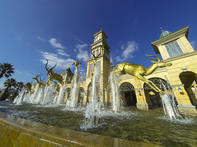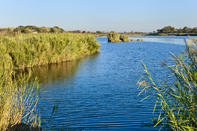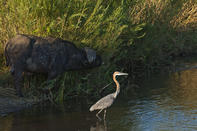Conservation Challenges in the Transvaal
During the 1890s, things grew chaotic in the Republic of the Transvaal (present day Mpumalanga). Since the discovery of gold, Johannesburg had been growing in leaps and bounds as people from all over the world flooded into the city in search of their fortune.

But these foreigners (called ‘uitlanders’ by the Boers) did not have a vote in the Republic and soon began clamouring for a political voice. It was in this environment of xenophobia and mistrust that the first concrete proposal for a wildlife preserve in the Lowveld was put forward to the Volksraad of the Transvaal, in 1895. The two men who tabled the motion were RK Loveday and JL Van Wyk, members of the Volksraad for Barberton and Krugersdorp respectively.
The First Conservation Proposal

Loveday and Van Wyk suggested that, with nearly all the big game in this Republic having been exterminated, the animals still remaining shrinking in number and the danger of extinction growing higher, the government proclaim a Government Game Sanctuary, where the killing of game would be prohibited altogether.
They further suggested a suitable area for this reserve, stating: “a certain portion of the District Lydenburg, being Government land, where most of the big game species are still to be found.” The problem was that the Volksraad did not have the power to proclaim a game reserve. That authority rested with President Kruger and his executive.
The Volksraad could only make a request to the supreme council, asking it to proclaim a reserve by putting the necessary notice in the government papers. Unfortunately, the council did nothing of the sort and the ‘game preserve’ failed to materialise.
The New Sabi Game Reserve

In 1896, RK Loveday wrote to WJ Leyds, the State Secretary of the Transvaal, and enquired why nothing had been done about the Volksraad’s request. Hunting was continuing within the proposed preserve and the game was diminishing every season. Once again, nothing happened. RK Loveday, however, was not about to be deterred.
In November 1897, he again wrote to the Executive Council and demanded to know why the wishes of the Volksraad in this regard had been ignored for more than two years. Finally, the lugubrious politicians discussed the matter and, three months later, the Sabi Game Reserve was proclaimed.
The date was now March 1898. In September 1898, the council announced that the new reserve would cover the region bounded by the Crocodile River in the South, the Sabi River in the north and the Lubombo Mountains in the East. The Western boundary, however, was poorly defined as it lacked any distinctive natural markers.
Loveday’s Honour

A warden was appointed at an annual salary of £250 and it would be his duty, along with four policemen, to prevent hunting and poaching within the conservation area. The first official warden was WM Walker, but he proved to be a disappointment. Several successive wardens were quickly hired and fired, but none seemed a good match for the job.
Nevertheless, the wheels had begun to turn. The champion of the Lowveld game reserve, RK Loveday, had seen his plans come to fruition through vision, dedication and perseverance.
His role in the establishment of what would become the world-famous Kruger National Park has largely been forgotten, and this is not fair. Much later, the estimable James Stevenson-Hamilton confessed in his journal that the national park would have been better named in Loveday’s honour rather than Kruger’s.
 The Kruger National Park (KNP, or simply ‘Kruger’, for short) is the premier game reserve in South Africa. Offering excellent Big Five g...
The Kruger National Park (KNP, or simply ‘Kruger’, for short) is the premier game reserve in South Africa. Offering excellent Big Five g... The first intake of rangers, for the newly formed Sabi Reserve, which later became the Kruger National Park, was assembled on an ad-hoc basi...
The first intake of rangers, for the newly formed Sabi Reserve, which later became the Kruger National Park, was assembled on an ad-hoc basi...